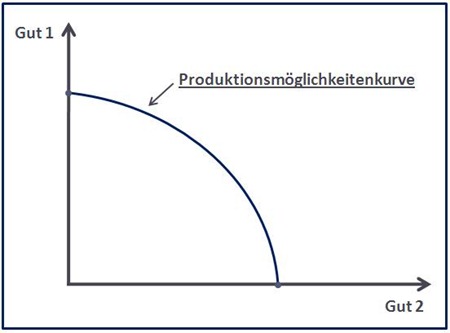Introduction to Economics Part 2 – Production Possibility Frontiers (or PPFs)
[Source: http://commons.wikimedia.org/wiki/File:WikiAbb1_1.JPG]
These can sometimes be referred to as Production Possibility Curves (PPCs), to reflect their shape. Frontier is a better word to use … you will need to think about what it is that the term frontier implies.
This session assumes you have a basic knowledge of PPFs already and points you to resources to help strengthen your understanding of this important concept.
This link is very good for explaining
a) the reason that the PPF is a curve and not a straight line
b) how opportunity cost increases as an economy tends to specialise in one of the two goods
http://tutor2u.net/economics/content/topics/introduction/ppfs.htm
If you feel that you need to understand these concepts even further, read the following link. Note that this introduces the idea of an outward shift of the PPF. You can ignore section C which we look at later in the course (especially Higher Level candidates)
http://www.investopedia.com/university/economics/economics2.asp
The concept of increasing opportunity cost is shown very visually here:
http://itc.boisestate.edu/mediashowcase/media/prodpossfron_audio.swf
… and this animation also emphasises outwards shift – two scenarios are given – what is the difference between them?
http://webcom2.grtxle.com/Source/uploads/Economics1.swf
You should now be in a position to work through the questions associated with the interactive PPF on the website below:
http://highered.mcgraw-hill.com/sites/007334365x/student_view0/chapter2/interactive_graph_2.html
Finally, it could be worth recapping these concepts by visiting the video links below:
1) pajholden explains the PPF on youtube:
Production Possibility Frontiers by Paul Holden
2) Another human explanation:
See it in full: http://blip.tv/play/AceTJY6iSw
Finally – what assumptions does the PPF make? Try and list as many as possible and then consider how realistic these assumptions are – given reasons or examples as to why they may be unrealistic.
| Print article | This entry was posted by James Penstone on August 23, 2010 at 10:17 am, and is filed under Economics, IB Economics. Follow any responses to this post through RSS 2.0. You can leave a response or trackback from your own site. |



